音频运放的电路有何注意事项?
发布日期:2023-05-07
点击次数:1048
功放是音频电子中关键的一环。它常用于将输入信号的功率放大许多倍。在音频电子中,运算放大器会提高信号的电压,但无法提供驱动负载的电流。本文我们来讲如何用TDA2040功放、2个功率晶体管以及一个4Ω阻抗的扬声器来打造一个40W的放大器。
放大器的拓扑结构
在一个放大器的链式系统中,功放用于负载前的最后一级。一般来说,音频放大器系统的拓扑结构如下。


如上图可见,功率放大器是与负载相连的最后一级。一般情况下,在功率放大器之前,需要使用前置放大器和电压控制放大器来修正信号。同时,某些情况下还需要用到音调控制,音调控制的电路应放在功率放大器前。
了解你的负载
在音频放大器系统中,负载和放大器的负载驱动能力是需要考虑的重要参数。而功率放大器的主要负载就是扬声器。功放输出取决于负载的阻抗,所以不合适的负载会影响功放的效率和稳定性。
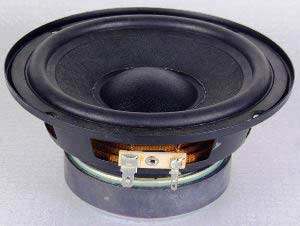

扬声器既是感性负载也是阻性负载。功放输出交流电,因此扬声器的阻抗是功率传输的关键因素之一。
在音频电子中,不同的扬声器功率和阻抗都不相同。市面上的扬声器大多数是4Ω,8Ω,16Ω以及32Ω的,其中4Ω和8Ω的成本比较低。同时我们需要知道,放大器标注的5W,6W或10W等指的是RMS(有效值)。
简单40W放大器的构造
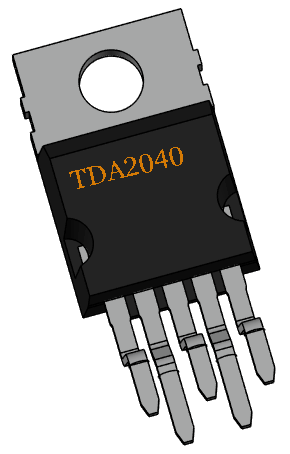

上图为TDA2040,属于比较常见的音频功放。它的封装为Pentawatt,且有5个引脚。引脚图可以在规格书中找到,如下图所示。
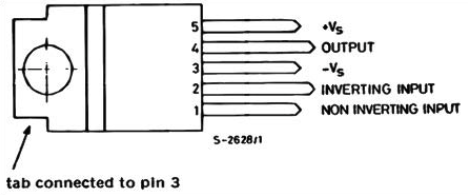

1:同相输入端;
2:反相输入端;
3:负电源;
4:输出端;
5:正电源。
顶部凸起部分与引脚3即负电源相连。如果要添加散热器的话也应使用相同的连接方式。从规格书中我们可以发现。
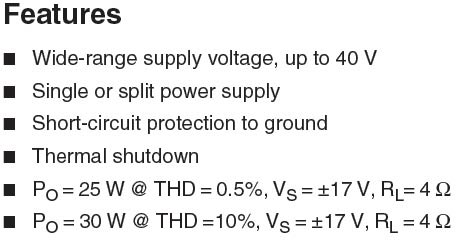

以上参数证明了该IC的性能良好。它提供了对地的短路保护。同样,热保护在过载的情况下提供了额外的安全保障。从最后两条数据中,我们可以看出TDA2040可以在4Ω的负载以及±17V的情况下输出25W。这个情况下,THD(总谐波失真)为0.5%。同样配置下,要想获得30W的输出,THD应变为10%。
同样规格书中提供了供电电压与输出功率的关系图。
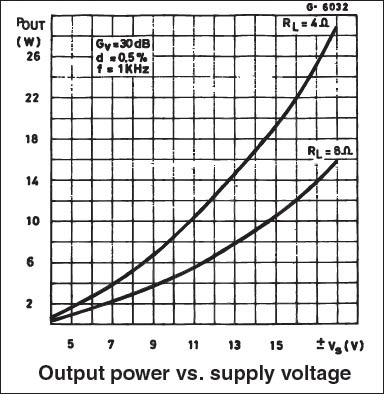

从图中可以看出,如果使用大于±15V的电源,我们就可以实现26W以上的输出。
为了生成额外的电压,我们还需要两个功率晶体管NPN和PNP,这里我们用的是BD712和BD711.这两个三极管都是TO-220C的封装。
两者的引脚图如下。
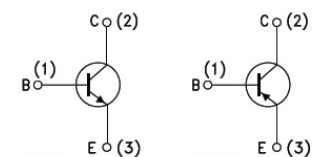
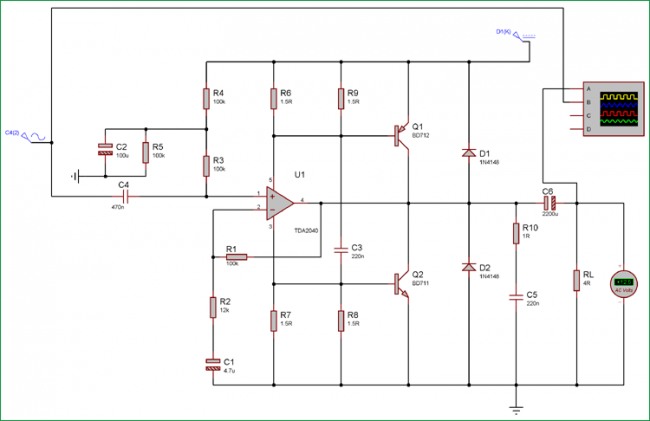

为了实现完美运作且THD不受影响,我们需要36V的输入来实现40W的输出。尽管这个电路只需15V到40V就可以启动了。
所需元器件
36V电源输出
4Ω 40W的扬声器
1.5Ω 0.5W的电阻x 4
100Ω 0.25W的电阻x 4
12Ω电阻 x 1
1Ω 2W的电阻 x 1
470nF电容
100uF电容
TDA2040
散热器
二极管1N4148 x 2
220nF电容
2200uF电容
4.7uF电容
BD711和BD712
电路图及原理
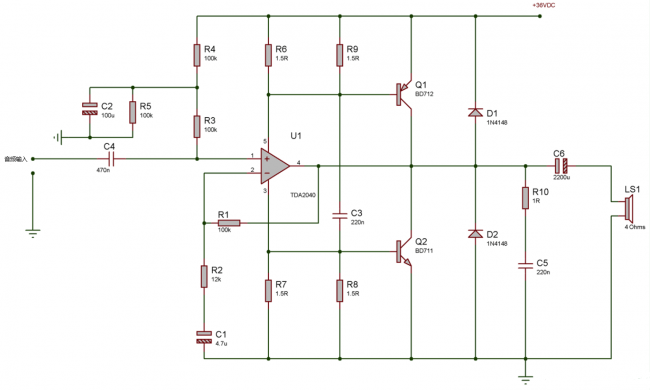

40W音频放大器的电路图也比较简单;TDA2040放大信号后提供到了25W的有效值功率。其余的功率放大则由BD711和BD712三极管来实现。输入电容470nF是隔直流的电容,只允许交流信号通过。还有一项重要因素就是单电源供电。因为放大器是由单电源供电,所以输入信号需要拔高几伏,从而使得放大器能在正负峰值上放大信号。电阻R6,R9,R7和R8负责为功率晶体管和功放提供偏置电压。R10和C5则属于RC缓冲电路,用于保护放大器免受扬声器这个感性负载的影响。
测试40W的放大器电路
我们用proteus的仿真工具来检查电路的输出;我们可以在虚拟示波器中观察输出。

仿真结果如下图所示
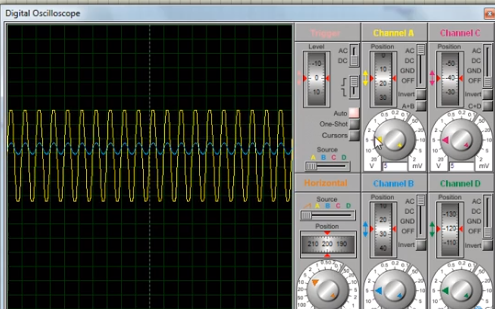

放大器功率的计算
我们可以用一个简单的公式来计算放大器的功率
放大器功率=V的平方/R
仿真工具中,我们在输出端接入一个交流电压表。该电压表显示的是交流电峰峰值。
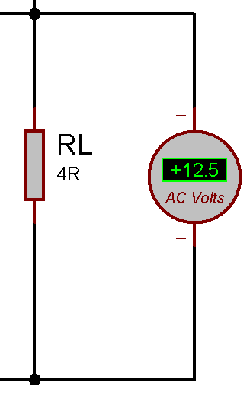

我们输入的是200Hz的低频正弦波信号。因为在低频下,放大器会在负载上输出更多电流,因此万用表也能准确检测到交流电压。
如上图所示,电压为+12.5V,按照上面的公式,且负载为4Ω可得
放大器功率=12.5 x 12.5 / 4 = 39.06(接近40W)
搭建40W放大器需要注意的事
当搭建电路时,功放TDA2040需要与散热器正确连接。越大的散热器结果越好。同时使用音频级的电容能获取更好的结果。
同时,音频相关的应用最好使用PCB。但必须了解以下几个准则。
1.音频信号布线要尽可能短,从而减少不必要的噪声耦合。
2.功率晶体管应与合适的散热器相连。
3.不要使用单一散热器来固定TDA2040,BD711和BD712。不同的元件使用不同的散热器,不然会出现短路的情况。
4.一定要注意扬声器的功率,否则扬声器很可能会被烧坏。
5.不要去除缓冲电路。在保护功率晶体管和功放上它起着至关重要的作用。
6.不要在放大器上施加放大过后信号,其THD会增加。










